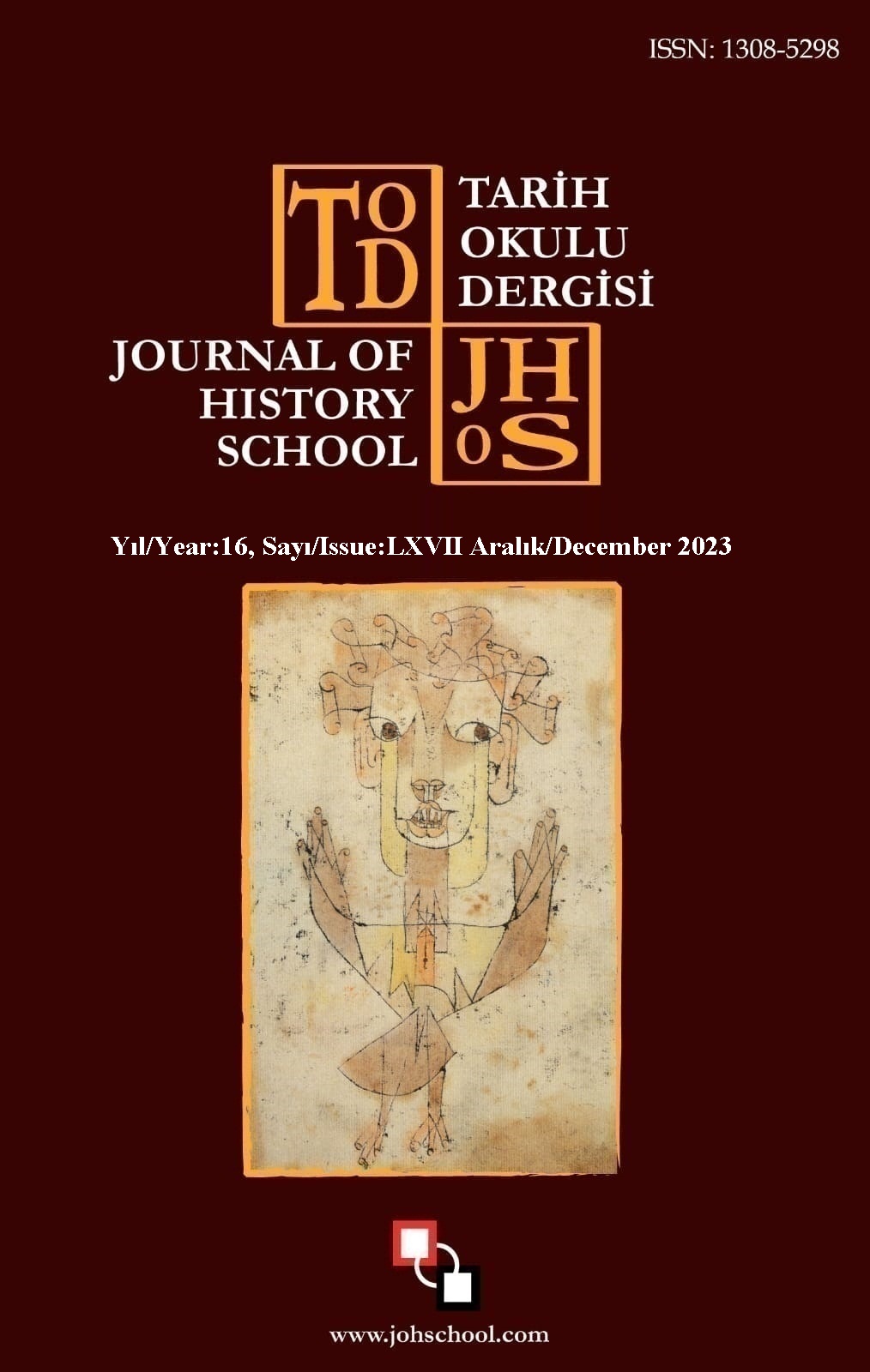Author :
Abstract
İnsan, tarih boyunca duygu ve düşüncelerini anlamlandırmaya çalışmıştır. Kendini ifade edebilme alanlarından birisi olarak sanat olgusu da geçmiş dönemlerde bu bağlamda gelişim göstermiştir. Böylece sanat kavramı İlk Çağlardan günümüze kadar bireysel ve toplumsal yaşamda vazgeçilmez, her an ve alanda karşılaşabildiğimiz olgulardan birisi olarak varlık kazanmıştır. Mağara duvarlarında varlığını sürdürmekte olan keçi, at, boğa, geyik, öküz ve benzeri ifadeler coğrafyayla ilgili izleri ve bilgileri, toplumların yapılarını ve sanatsal unsurlarını anlayabilmek için önemli ipuçları olarak ele alınmaktadır. Kayaların üzerine resim yapmanın zorluğunun ve bir fikri, bir olayı aktarmanın ifadesel gerekliliğinin, süreç içerisinde sembolik anlatımın gelişimine olanak sağladığı bilinmektedir. Sembolik anlatım ile birlikte oluşan, kayaların üzerine işlenmiş ve günümüzden yaklaşık 15.000 yıl kadar öncesine dayanmakta olan bu resimlere petroglif adı verilmektedir. Tarih öncesi toplumlardan günümüze kadar taşınmakta olan unsurların, petroglifler gibi geçmişin diğer kültürel yapı taşlarının ve değerlerinin günümüz sanatçıları tarafından benimsendiği görülmektedir. Günümüzde çağdaş sanatçılar kendi kültür kökenlerinden yararlanabilmekte ve yeniden yorumlamalar yapabilmektedirler. Bu bağlamda da sanatçı Meliha Yılmaz çalışmaları ile dikkat çekmektedir. Meliha Yılmaz’ın sanatsal üretimlerinde, tarih öncesinde neolitik ve paleolitik dönemler içerisinde yaşamış olan toplumlardan, bu toplumların oluşturduğu değerlerden ve kültürel unsurlardan etkilenmiş olduğu görülmektedir. Bu araştırmada da Meliha Yılmaz’ın çağdaş bir anlayışla oluşturduğu eserlerinde, ritüellerden ve petrogliflerden nasıl etkilenmiş olduğu ve bu etkiyi nasıl ifade ettiği, ortaya koyduğu incelenmeye çalışılmıştır. Bu amaç doğrultusunda, petrogliflerin ve ritüellerin çağdaş Türk resmine yansıması, Meliha Yılmaz’ın eserleri üzerinden incelenmek istemesi nedeniyle nitel yöntem ve durum deseni tercih edilmiştir. Sanatçının eserleri içerisinde petrogliflere ve ritüel sahnelerine ilişkin görselleri bulunduran resimler kullanılmıştır. Bu resimler incelendiğinde de Yılmaz’ın kaya resimlerinde bulunan figüratif unsurların kullanılarak çağdaş bir şekilde yorumlamakta olduğu sonucuna ulaşılmaktadır.
Keywords
Abstract
Throughout history, humanity has endeavored to make sense of emotions and thoughts. One of the arenas for self-expression has been the phenomenon of art, which has developed in this context in past eras. Thus, the concept of art has gained existence from antiquity to the present as an indispensable phenomenon that we encounter at every moment and in every area of individual and social life. Expressions such as goats, horses, bulls, deer, oxen, and the like, which continue to exist on cave walls, are considered important clues for understanding geographic traces and information, societal structures, and artistic elements. The difficulty of painting on rocks and the expressive necessity of conveying an idea or an event are known to have facilitated the development of symbolic expression over time. Along with symbolic expression, the pictures engraved on rocks, dating back to about 15,000 years ago from today, are called petroglyphs. Elements carried from prehistoric societies to the present day, like petroglyphs and other cultural building blocks and values of the past, are seen to be embraced by contemporary artists of today. Contemporary artists can benefit from their cultural roots and make reinterpretations. In this context, artist Meliha Yılmaz is drawing attention with her works. In Meliha Yılmaz’s artistic productions, it is seen that she has been influenced by the values and cultural elements created by the societies that lived during the Neolithic and Paleolithic periods in prehistory. This study also attempted to examine how Meliha Yılmaz was influenced by rituals and petroglyphs in her works created with a contemporary understanding, and how she expressed this influence. For this purpose, the reflection of petroglyphs and rituals on contemporary Turkish painting, examined through Meliha Yılmaz’s works, qualitative method and case design have been preferred. Paintings containing visuals related to petroglyphs and ritual scenes were used among the artist's works. Upon examining these paintings, it is concluded that Yılmaz interprets figurative elements found in rock paintings in a contemporary manner.
